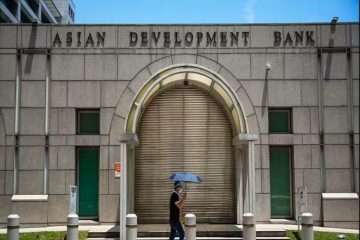China Is Getting Ready for the Chip Wars’ Next Stage by Stockpiling
Many nations prepare for potential wars by hoarding fuel and weaponry. Chinese businesses are frantically hoarding components for chip manufacturing equipment.
As a result, Western and Japanese vendors have reaped enormous benefits, but this bodes poorly for the future.
Tokyo Electron, a Japanese manufacturer of chip-equipment, is the most recent company to reap the benefits of China’s surplus. Since it increased its earnings forecast around two weeks ago, its stock has climbed 20%. Sales in China more than doubled from the previous year, and the country accounted for nearly half of its total net sales in the most recent quarter.
As global semiconductor companies, particularly those making memory chips, reduced their capital expenditure last year, strong demand from China helped to counteract this trend. Customs statistics from China show that the value of semiconductor equipment imported to the nation reached about $40 billion in 2023, an increase of 14% from the previous year. Global sales of semiconductor equipment declined 6.1% year-on-year in 2023 to $101 billion, according to industry organization SEMI. This is a marked improvement from SEMI’s initial July projection, which predicted a decline of 18.6%.
The Chinese government is spending like crazy for a few different reasons. To start, in preparation for stricter export restrictions in the West, Chinese semiconductor producers have been hastily stockpiling equipment. This is especially the case with lithography equipment, which print microcircuits on silicon wafers using light. Along with the United States, Japan and the Netherlands, who are major exporters of these devices, have also implemented export restrictions to China.
Lithography equipment imported to China from the Netherlands nearly doubled in 2023 compared to the previous year, as shown in China’s customs data. The world leader in lithography equipment, a Dutch company called ASML, saw a tripling of net system sales to China in 2023. Compared to 2022, when China accounted for just 14% of ASML’s total net system sales, last year it increased to 29%.
ASML’s state-of-the-art extreme ultraviolet lithography (EUV) equipment has been unavailable to Chinese buyers for some time. It will also be unable to ship some less sophisticated devices there due to newer regulations. Dutch authorities have canceled licenses for selling specific lithography machines to China, according to the company’s announcement last month. Ten to fifteen percent of ASML’s sales to China might be impacted this year, according to the company.
Companies may see a slowdown in sales growth in 2024 as a result of China’s stockpiling binge last year. Nonetheless, China’s heavy spending on semiconductor production capacity is a trend that will likely continue for some time.
Sanctions are making it harder for Chinese companies to produce cutting-edge electronics, but they are making great strides in more established technology. Semiconductor Manufacturing International Corporation (SMIC), the biggest contract chip maker in China, has stated that its capital investment for this year will be approximately $7.5 billion, which is almost unchanged from last year.
In the long run, chip-making equipment makers should be wary of China’s efforts to cut ties with Western suppliers. Although China’s advancement in important technologies like lithography will be gradual, there are certain markets where Chinese vendors are already displacing their Western counterparts. In 2018, local suppliers accounted for just 3% of China’s wafer-fabrication equipment industry; last year, Bernstein predicts that number will rise to about 14%. By 2026, it anticipates that share will have increased to 29%.
Among these domestic heavyweights is AMEC (Advanced Micro-Fabrication Equipment Inc. China), a manufacturer of etching tools used to form circuits on wafers. Although full-year statistics for 2023 have not been released just yet, the most recent public estimate places revenue increase at 32% year-on-year. Sales of the company’s flagship dry etching equipment jumped 49%, according to the business. There has been ongoing growth, as new orders for the equipment increased by 60% last year.
Restrictions on exports to China have both positive and negative aspects for Western and Japanese manufacturers of semiconductor equipment. They are currently making a ton of money. However, there is an increase in potential dangers in the long run, particularly with less advanced technologies.







